The town of Samokov (Southwest Bulgaria) has a very rich history which is proven by the large number of sites attracting thousands of Bulgarian and foreign tourists each year. The town was founded in the medieval period and has been a multicultural center ever since. It has hosted different religions as well. The well-preserved Bayrakli Mosque which has been declared a cultural monument of national significance is one of the town’s landmarks. It was built around 1845 on the order of Mehmed Husref Pasha. Director of the Samokov Museum of History Veselin Hadzhiangelov explains that the only preserved documents of the mosque’s construction are kept at the archives of Hristo Yovevich who was one of the artists that painted the mosque. There are some original projects for wall-painting decoration among the documents. The mosque can be seen on photographic material and postcards dating back to the end of the 19th century. The architecture of Bayrakli Mosque is no different from the other mosques built in the same period – a square house of prayer facing southeast to the holy cities Mecca and Medina and a prayer niche (mihrab).
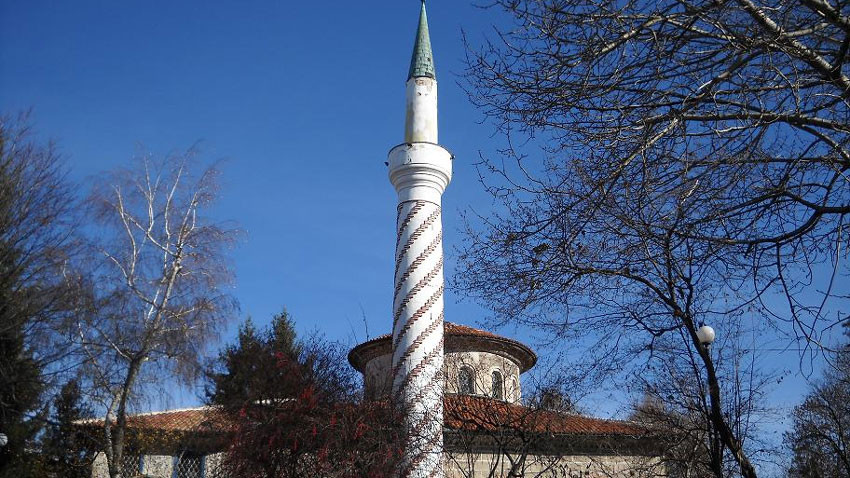
The construction methods prove that the mosque was built by Bulgarian craftsmen, Veselin Hadzhiangelov says and adds that the frescoes make this monument unique:
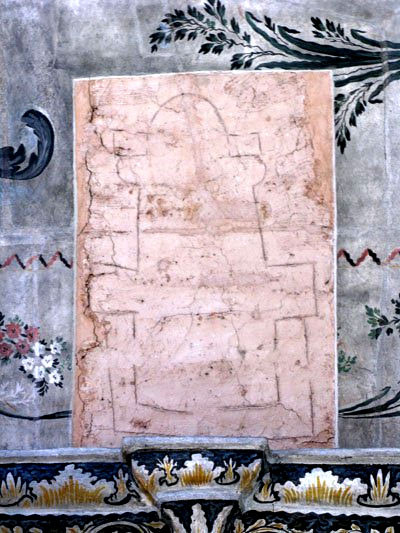 The builders of Bayrakli Mosque left a permanent mark. In the 1970’s the mosque was restored by one of Bulgaria’s best experts in this field – Georgi Belstoinev from Samokov. The artists found graphite on the wall plaster during the renovation. A church plan was made in the southeast corner of the mosque which resembles the one in the Rila Monastery. Many researchers, including art critic Anna Roshkovska, believe that the craftsmen who built the temple at the Rila Monastery after the last arson were the ones that constructed Bayrakli Mosque as well. The other graphite is in the northwest corner where the names Ivan, Risto and Kosta were painted. They coincide with the three Samokov mural painters from that period – Ivan Iconopisets (meaning icon-painter), Hristo Yovevich and Kosta Valyov who were most likely the artists who made the rich decoration at the mosque.
The builders of Bayrakli Mosque left a permanent mark. In the 1970’s the mosque was restored by one of Bulgaria’s best experts in this field – Georgi Belstoinev from Samokov. The artists found graphite on the wall plaster during the renovation. A church plan was made in the southeast corner of the mosque which resembles the one in the Rila Monastery. Many researchers, including art critic Anna Roshkovska, believe that the craftsmen who built the temple at the Rila Monastery after the last arson were the ones that constructed Bayrakli Mosque as well. The other graphite is in the northwest corner where the names Ivan, Risto and Kosta were painted. They coincide with the three Samokov mural painters from that period – Ivan Iconopisets (meaning icon-painter), Hristo Yovevich and Kosta Valyov who were most likely the artists who made the rich decoration at the mosque.
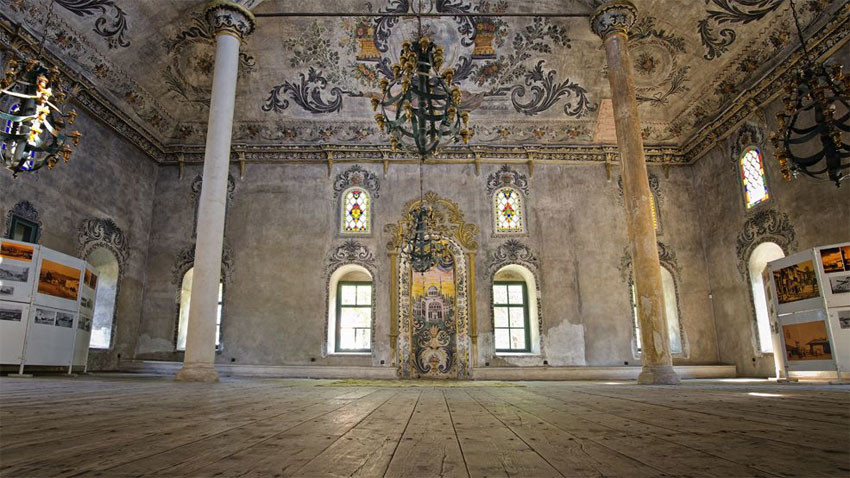
Did the stylistic patterns typical of the Christian art influence the painting of the Bayrakli Mosque in Samokov?
This is what makes this Islamic temple different from all others. The typical Muslim decoration contains sultan seals with calligraphic ornaments, sultan signatures, texts from the Koran, geometric figures, etc. Bayrakli Mosque has a very rich decoration typical of the Baroque ornamentation of public buildings in Central and Eastern Europe. The crosses are skillfully masked with floral elements, which is yet another proof that the artists who painted this mosque were Christians. We can also notice a Jewish star on the vault. Its presence in a Muslim temple can be explained with the fact that this solar symbol has been known since the beginning of mankind and has been placed on various religious buildings over the centuries. In other words, there is no hidden link between Judaism and Islam.
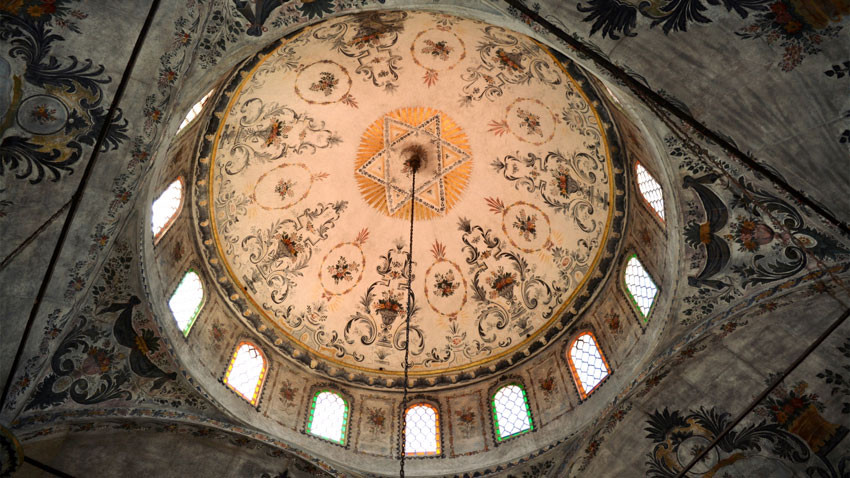
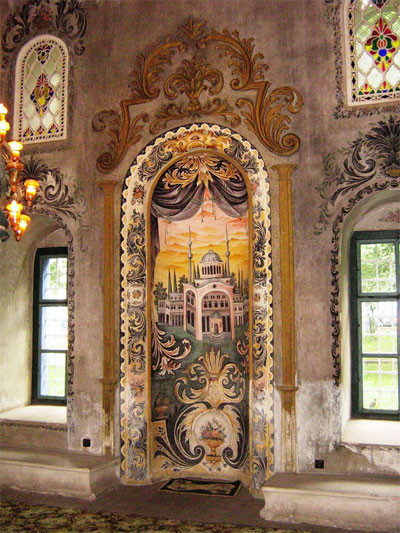 Can we speak of a common artistic taste between religions and more specifically between Christianity and Islam?
Can we speak of a common artistic taste between religions and more specifically between Christianity and Islam?
We can speak of such common artistic taste. In the late Ottoman period the borders were open and people had the opportunity to travel outside the empire. The contacts and the cultural relations with the wealthier Christian countries influenced art as well. When Mehmed Husrev Pasha arrived for the opening of the Bayrakli Mosque the Muslim dignitaries were surprised and shocked by the frescoes, because it differed from their perceptions on how a house of prayer should be decorated. They wanted to erase the decoration, because in their word’s it was made by Christian infidels and was of a secular type. However, Mehmed Husrev Pasha- a person with university education and diplomatic and military career was influenced strongly by the beauty of the decoration and he refused to erase it. Only the mihrab (niche of prayer), depicting mosques from Mecca and Medina, was covered in plaster – this mural painting was later discovered during the restoration. Let us not forget that the homes of the wealthy Christians and Muslims were traditionally decorated with many ornaments.
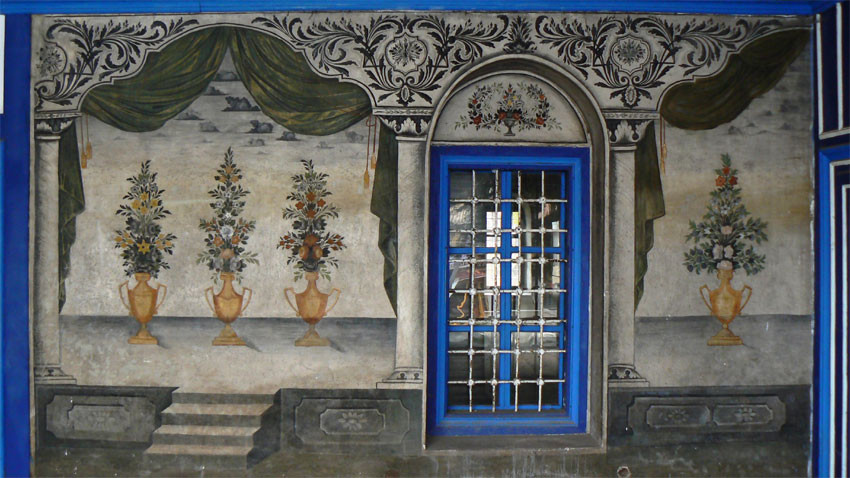
After the restoration of Bayrakli Mosque it became an exhibition venue of Ottoman cultural heritage. We should not forget that Ottoman culture also had an important part in the life and the culture of the Bulgarians, Veselin Hadzhiangelov said in conclusion.
English version: Kostadin Atanasov
Photos: bg.wikipedia.org, samokov.info, bgglobe.netMany citizens of Sofia took advantage of the opportunity to see the Enina Apostle and the Argirov triod manuscripts which were exhibited today for two hours at the National Library "St. Cyril and Methodius". The event took place on the..
On the eve of St Athanasius' Day, one of the churches on the outskirts of Sofia is already preparing to welcome His Holiness the Metropolitan of Sofia and Bulgarian Patriarch Daniil , who this year will celebrate the Divine Liturgy in the church in the..
Atanasovden, also known as Midwinter in our folk calendar, is a holiday on which the Orthodox Church and our folklore pay tribute to St. Athanasius the Great – Archbishop of Alexandria and a fighter against Arianism (church heresy which rejects the..
Priest Lyubomir Bratoev is a direct participant in the events of t he founding of the Bulgarian Orthodox Church community in Berlin . He came to the..

+359 2 9336 661
